The State Council meets monthly on the first non-holiday Monday of the month. State Council meetings are open to all members of the NM chapter. Meeting reminders are generally sent out only shortly before the meetings and include connection information, but the regular first Monday schedule is established in advance.
The State Council is responsible for the management of the activities of the chapter, and are elected for two-year terms. Elections held March 2024 and 2025 result in the following Council:
Terms expiring 2026: Michael Hensley, Nick Knorr (secretary/treasurer), Peter Lipscomb (vice chair), Gary Starkweather, Derek Wallentinsen.
Terms expiring 2027: John Briggs (2nd term), Jon Holtzman (chair, 2nd term), Marisela La Grave (2nd term), Sarah McIntyre, Colin Nicholls, Jim Price (2nd term), Didier Saumon
Council members can be re-elected for up to three terms.
Michael Rymer represents Dark Sky International at our Council meetings.
John Briggs
John W. Briggs has lived and worked at far-ranging observatories in various technical capacities, including Mount Wilson, Yerkes, National Solar, Maria Mitchell, Venezuelan National, Chamberlin, Van Vleck, and South Pole Station. He came to New Mexico with his family in 1997 to assist in the final commissioning of the Sloan Digital Sky Survey at Apache Point. In the 1980s he was an assistant editor at Sky & Telescope magazine and built Bogsucker Observatory in Massachusetts. He is a member of many astronomical organizations including the Springfield Telescope Makers responsible for the annual Stellafane Convention in Vermont, and he has served on the board of the century-old American Association of Variable Star Observers. His principal activity now involves the Astronomical Lyceum, an informal museum, library, laboratory, and lecture hall devoted to historical astronomy and its preservation, and his role as secretary of the new Alliance of Historic Observatories. He is an adjunct in Physics at NMT in Socorro, and he has participated in IDA meetings as early as the 1990s.
Michael Hensley
Michael Hensley is a Founder of Dark Sky New Mexico, a remote telescope hosting facility in Animas NM. He retired from New Mexico Tech where he was Director of Strategic Research Initiatives. As such, he was responsible for securing major contract funding from foundations, corporations, and federal agencies.
Hensley was previously a Professor of Urban Affairs and Planning at Virginia Tech and served as a White House Community Builder Fellow during the Clinton Administration.
Hensley is a fourth generation New Mexican and spends his time “… enjoying the night skies in dark, quiet, and peaceful Animas” as well as overseeing his family’s diverse business operations. He obtained his Ed.D. in technology education from Virginia Tech and did post doctoral studies at the John F. Kennedy School of Government at Harvard University.
Jon Holtzman
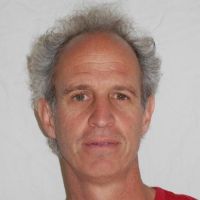 Jon Holtzman is a professional astronomer and educator. He is currently an Emeritus
Professor of Astronomy at New Mexico State University, where he has worked
since 1995. His research interests have led to significant involvement with
the Hubble Space Telescope and the Sloan Digital Sky Survey. As an educator,
he has taught at both the undergraduate and graduate level. Among other public
outreach efforts, he has run a series of virtual open houses from the
Tortugas Mountain Observatory outside of Las Cruces.
Jon Holtzman is a professional astronomer and educator. He is currently an Emeritus
Professor of Astronomy at New Mexico State University, where he has worked
since 1995. His research interests have led to significant involvement with
the Hubble Space Telescope and the Sloan Digital Sky Survey. As an educator,
he has taught at both the undergraduate and graduate level. Among other public
outreach efforts, he has run a series of virtual open houses from the
Tortugas Mountain Observatory outside of Las Cruces.
As an outdoor enthusiast, he finds respite from looking at the dark nighttime
sky, and wants to ensure that all people have the opportunity to do the same.
Nick Knorr
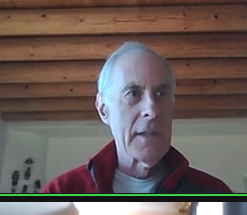 Nick Knorr is a happily retired banker, living in Santa Fe. He is
an avid hiker and backpacker. He believes that connection with the
natural order, which is ever diminishing, is an essential touchstone
of human existence. That order is nowhere more apparent than in
the night sky to those who are not blinded by light. He cannot
forget visiting the Hayden Planetarium as a boy and discovering the
vastness of the universe. Although he abandoned astronomy for other
pursuits, he remains fascinated by the scientific exploration of
the universe through space and time.
Nick Knorr is a happily retired banker, living in Santa Fe. He is
an avid hiker and backpacker. He believes that connection with the
natural order, which is ever diminishing, is an essential touchstone
of human existence. That order is nowhere more apparent than in
the night sky to those who are not blinded by light. He cannot
forget visiting the Hayden Planetarium as a boy and discovering the
vastness of the universe. Although he abandoned astronomy for other
pursuits, he remains fascinated by the scientific exploration of
the universe through space and time.
Marisela La Grave
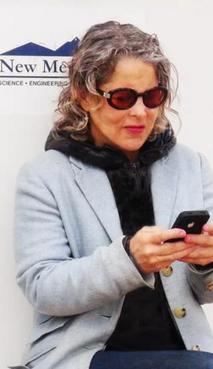
Marisela La Grave, is the founder of Dark Sky Land, Inc, an interdisciplinary night-ecology-wildlife conservation organization, with the mission to preserve a 600-mile astro-wildlife corridor in western New Mexico. She is a New York and New Mexico based Intermedia artist, director, producer, filmmaker, photographer and creator of a collaborative multilayered spectrum of interdisciplinary projects. Her works include the creation and production of experimental films, site-specific installations, essay style documentaries, and time based works for camera, that have been screened, exhibited, presented, installed, and published internationally and housed in private collections and museums around the world. She is the co-founder and the Artistic Director at Magnetic Laboratorium™ (2001-2025) a New York - Paris - New Mexico based transdisciplinary studio.
Peter Lipscomb
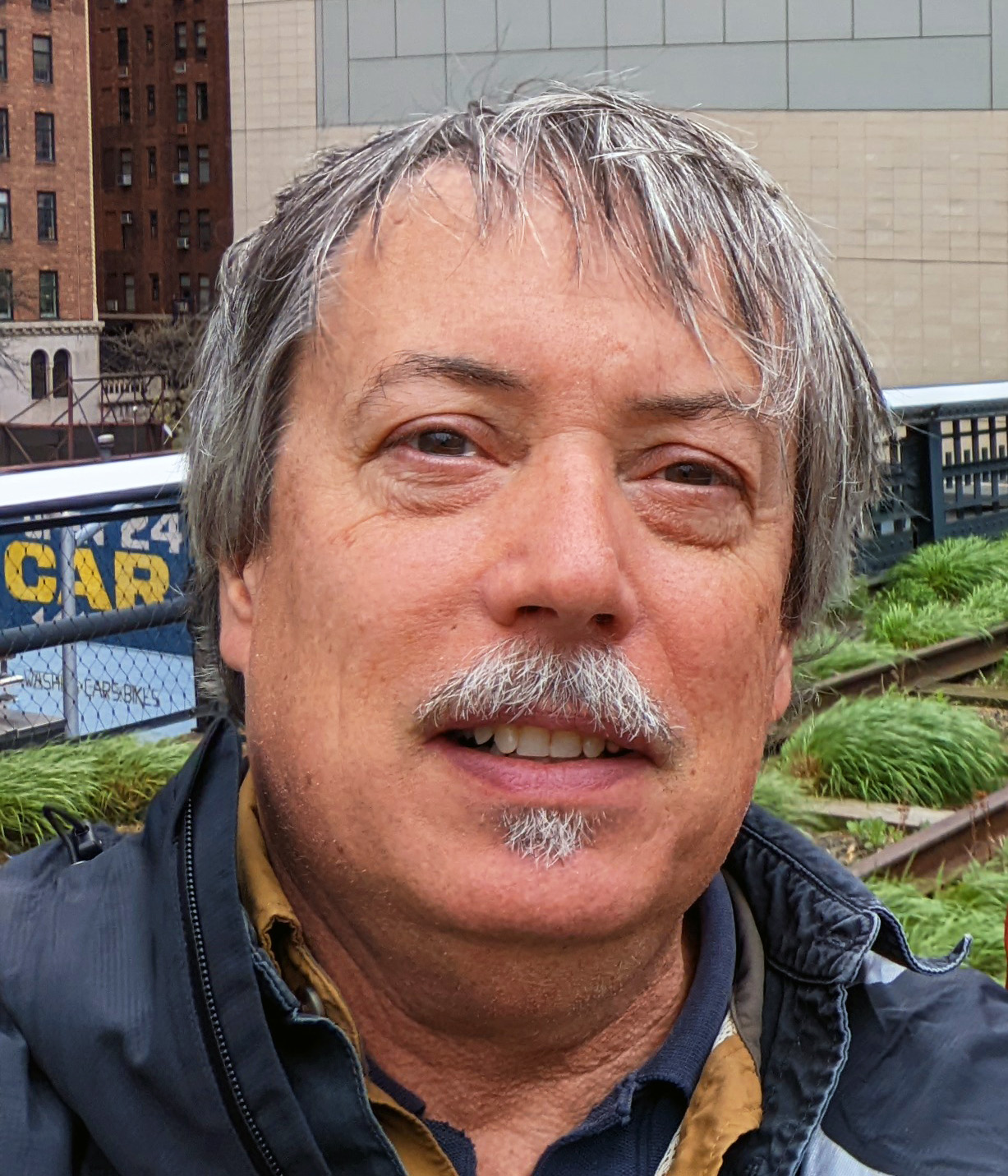 Peter has been involved in dark sky preservation and education
efforts for two decades. First in 2004, as a volunteer supporting
Chaco Culture National Historical Park and its astronomy program
during a memorable Mars opposition summer. Next as Director of the
New Mexico Heritage Preservation Alliance Night Sky Program (NMHPA)
where he produced the Alliance’s Night Sky Conference at Taos, NM in 2007.
He actively backed efforts to strengthen enforcement language
in the New Mexico Night Sky Protection Act in 2007 and 2009. He attended
legislative committee meetings, directly engaged with key legislators,
created lobby fliers and information sheets, rallied statewide
contacts for support emails and phone calls to committee members
for upcoming sessions.
Peter has been involved in dark sky preservation and education
efforts for two decades. First in 2004, as a volunteer supporting
Chaco Culture National Historical Park and its astronomy program
during a memorable Mars opposition summer. Next as Director of the
New Mexico Heritage Preservation Alliance Night Sky Program (NMHPA)
where he produced the Alliance’s Night Sky Conference at Taos, NM in 2007.
He actively backed efforts to strengthen enforcement language
in the New Mexico Night Sky Protection Act in 2007 and 2009. He attended
legislative committee meetings, directly engaged with key legislators,
created lobby fliers and information sheets, rallied statewide
contacts for support emails and phone calls to committee members
for upcoming sessions.
He completed five contract cycles with New Mexico State Parks (NMSPD) as “Reach for the Stars” program contractor, providing public programs at parks statewide, curriculum development, maintenance of astronomy equipment and facilities, and training for volunteers and staff. He authored the nomination packet for designation of Clayton Lake State Park as New Mexico’s first International Dark-Sky Park and supported ordinance efforts in Clayton and Union County, Rio Arriba County, Taos, and Taos County.
In 2002, he founded Astronomy Adventures, a guided night sky tour business. Over the years, he has shared views of the wonderful and increasingly rare quality of New Mexico’s dark sky with thousands of people from across the country and around the world. He wrote the weekly Night Skies column for the Santa Fe New Mexican 2007-2010. In 2016, Peter was honored by the Santa Fe Conservation Trust with the Stewart Udall award for his night sky activism. His public engagement work with the NMHPA, NMSPD, New Mexico Legislature, local ordinance action, and interpretive education efforts has emphasized the broad-based importance of the nighttime environment. Its role as a natural and cultural resource and how it supports biodiversity, protects cultural heritage, conserves energy production, enhances our health and safety, bolsters economic benefits of scientific research and astro-tourism while fulfilling our need for wonder, awe, serenity, and a universal connectedness to inspire our creativity and imagination.
In addition to his full-time work with New Mexico State Parks, Peter is a New Mexico regional team leader for the NASA Earth to Sky Program, serves as lead tech for Deep Sky West remote observatory in Rowe, NM, and hosts Sky Railway’s Stargazer train. He is delighted to have been a part of forming the New Mexico DarkSky chapter.
Sarah McIntyre
I’m a scientist and photographer/astrophotographer in Albuquerque. I am a lifelong New Mexican, and have spent my entire life appreciating New Mexico’s dark skies. As my longstanding interest in astronomy has expanded into astrophotography (and that has expanded from nightscapes to deep space imagery) in recent years, the importance of taking action to protect our dark skies has become increasingly important to me. I’m excited to be a member of NM DarkSky and look forward to being involved with efforts to educate the public and raise awareness of dark skies as a vital natural resource.
Colin Nichols
Colin Nicholls is a PhD Physicist who spent the first 20 years of his career developing advanced instrumentation for industrial process control in Hi Tech research institutions in the US and the UK. For the last 23 years he has worked in education in Taos county, first at Taos High School and now at UNM Taos, where he is currently Science Department Chair. A long time visual astronomer, Nicholls is on the board of the El Valle Astronomers and is working with that club, UNM Taos and the Taos County planners to update the county’s Dark Sky ordinances.
Jim Price
Jim Price is practically a native New Mexican. He has lived in Albuquerque since most of what is now developed was dirt. Jim worked for a lighting company and then started his own. He has sold lighting ranging from miniature lighting for microscopes to parking lot lighting for every type of business. Jim realized the need for shielded lighting when shopping malls and other businesses around Albuquerque with parking lots enlisted him to help them be better neighbors. He realized then that lighting can be made more comfortable and effective through proper aiming and shielding. He has adopted a less is more philosophy with lighting. For example, less glare means more visual acuity. Less stark contrast means more awareness of surroundings. He truly believes that taking the “less” approach leads to “more” satisfying results.
Didier Saumon
 Didier Saumon has been an amateur astronomer for nearly 50 years
and has a fondness for visual observations of the deep sky and
exotic objects. He enjoys sharing his passion for the night sky
with the public at star parties in the surrounding area. Until his
recent retirement, he was an astrophysicist studying white dwarfs,
brown dwarfs, exoplanets, and the properties of matter under the
extreme conditions found in these objects. He’s had an interest in
outdoor lighting and light pollution for three decades and contributed
to the development and adoption of a modern lighting ordinance in
the county of Los Alamos. He’s witnessed the steady erosion of the
night sky over the past 20 years and wants to see it stopped. On
good days, he dreams of seeing it reversed to a reasonable level
for the benefit of all. May the stars be with you.
Didier Saumon has been an amateur astronomer for nearly 50 years
and has a fondness for visual observations of the deep sky and
exotic objects. He enjoys sharing his passion for the night sky
with the public at star parties in the surrounding area. Until his
recent retirement, he was an astrophysicist studying white dwarfs,
brown dwarfs, exoplanets, and the properties of matter under the
extreme conditions found in these objects. He’s had an interest in
outdoor lighting and light pollution for three decades and contributed
to the development and adoption of a modern lighting ordinance in
the county of Los Alamos. He’s witnessed the steady erosion of the
night sky over the past 20 years and wants to see it stopped. On
good days, he dreams of seeing it reversed to a reasonable level
for the benefit of all. May the stars be with you.
Gary Starkweather
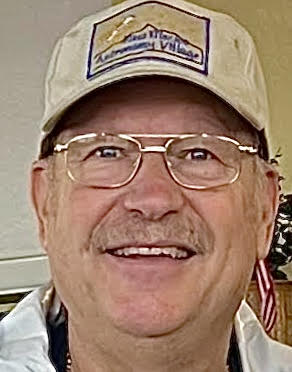 My name is Gary Starkweather and I’m a Dark Sky International (DSI) member and a
council member of New Mexico DarkSky (NMDS). Let me briefly explain why DSI and
NMDS membership is of particular interest to me. After retiring in 2007, I chose to
continue my interest in astronomy and amateur astrophotography as a hobby. In 2012,
after looking for a place with dark skies, I moved to an astronomy community in Luna
County, New Mexico at New Mexico Astronomy Village (NMAV) near Deming, NM.
NMAV had very dark skies and the State of New Mexico had a Dark Sky Protection Act
which I reasonably believed would protect the naturally dark skies of New Mexico.
My name is Gary Starkweather and I’m a Dark Sky International (DSI) member and a
council member of New Mexico DarkSky (NMDS). Let me briefly explain why DSI and
NMDS membership is of particular interest to me. After retiring in 2007, I chose to
continue my interest in astronomy and amateur astrophotography as a hobby. In 2012,
after looking for a place with dark skies, I moved to an astronomy community in Luna
County, New Mexico at New Mexico Astronomy Village (NMAV) near Deming, NM.
NMAV had very dark skies and the State of New Mexico had a Dark Sky Protection Act
which I reasonably believed would protect the naturally dark skies of New Mexico.
In 2015, I moved into a new house at NMAV and by 2023, I completed construction of three observatories. During the years of construction I realized that I was wrong about the state’s Dark Sky Protection Act actually protecting the naturally dark skies. The Act turned out to do virtually nothing to protect the sky. Local counties and towns wouldn’t enforce the state’s outdoor lighting regulations; they simply ignored the Dark Sky Protection Act as if it didn’t exist.
My wife and I invested our life savings moving to New Mexico where we could enjoy dark skies. We were disappointed because locals were content with ruining the night skies, and the rate of loss was accelerating. Our story is not unique. There is a large community of professional and amateur astronomers in New Mexico that are also watching the rapid destruction of our naturally dark skies. We are looking for ways to stop the loss of our dark skies and reverse some of the damage that has already happened.
Retirement shouldn’t be about spending time protecting retirement investments from destruction by others, yet, here we are. That is why I have joined the New Mexico DarkSky team, in hopes that this alliance, along with other like minded, people will be able to make a difference in protecting naturally dark skies.
Derek Wallentinsen
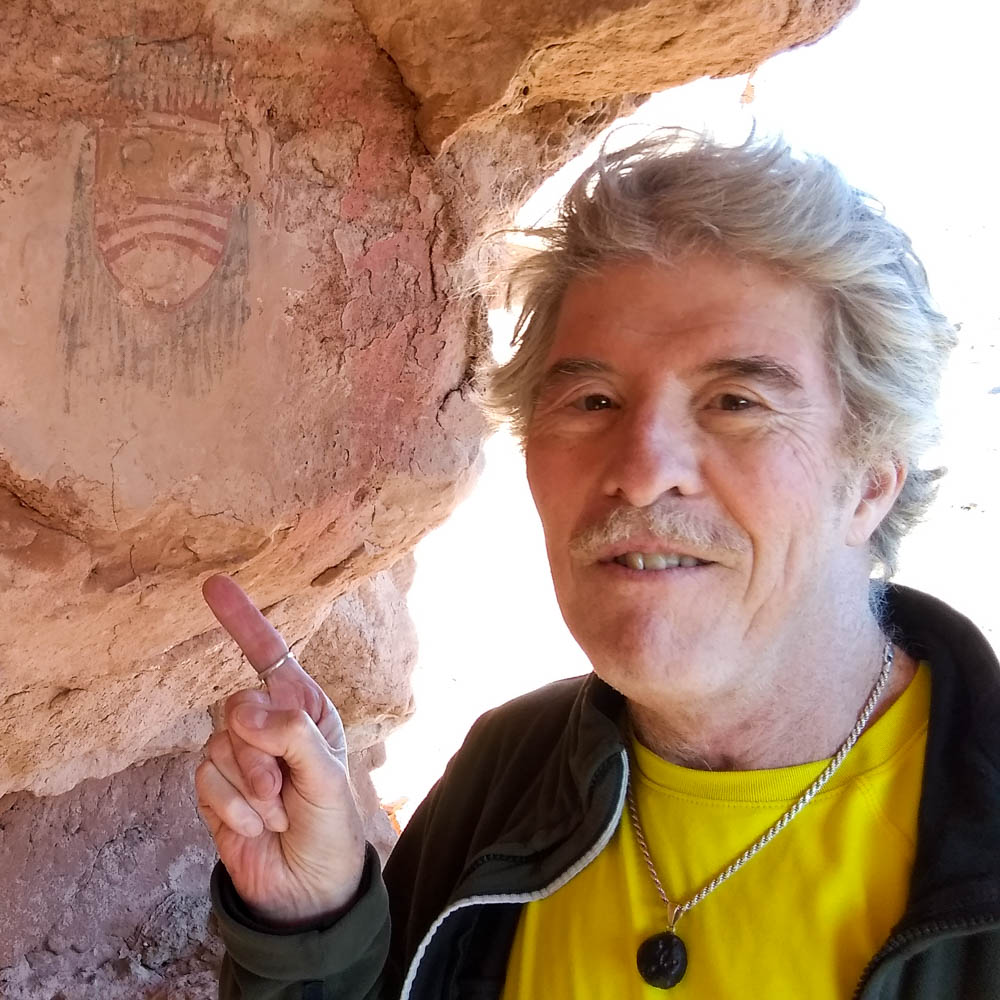 Derek Wallentinsen is an independent educator who has been deeply involved in
astronomy outreach and dark skies preservation throughout his life. He is a NASA
JPL Solar System Ambassador, NASA ASP Eclipse Ambassador and AUI Astronomy
in Chile Educator Ambassador, sharing astronomy knowledge with broadly diverse
groups of the public. He has lived in NM since 1958 and has been active in private
and public dark-sky vocations. An early activist for dark skies, Derek drafted a
night-sky friendly municipal lighting ordinance in the 1970s. During his time as a
National Park Service ranger, Derek was instrumental in the certification of
several national parks as International Dark Sky Parks (including Dinosaur
National Monument and El Morro National Monument) and was the recipient of
three STAR awards. He currently is an AstroVIP at several national parks,
monitoring their dark skies and creating various outreach programs and videos.
He formerly worked at the telescope company Celestron and originated the
company’s online knowledgebase.
Derek Wallentinsen is an independent educator who has been deeply involved in
astronomy outreach and dark skies preservation throughout his life. He is a NASA
JPL Solar System Ambassador, NASA ASP Eclipse Ambassador and AUI Astronomy
in Chile Educator Ambassador, sharing astronomy knowledge with broadly diverse
groups of the public. He has lived in NM since 1958 and has been active in private
and public dark-sky vocations. An early activist for dark skies, Derek drafted a
night-sky friendly municipal lighting ordinance in the 1970s. During his time as a
National Park Service ranger, Derek was instrumental in the certification of
several national parks as International Dark Sky Parks (including Dinosaur
National Monument and El Morro National Monument) and was the recipient of
three STAR awards. He currently is an AstroVIP at several national parks,
monitoring their dark skies and creating various outreach programs and videos.
He formerly worked at the telescope company Celestron and originated the
company’s online knowledgebase.
Wallentinsen has a Master of Science degree in Astrophysics. In addition to
telescopes, night and day skies, he enjoys desert hiking, geology and birds from
his home base in Albuquerque, New Mexico.
“I want to see New Mexico’s Dark Sky International chapter broaden out to reach
beyond astronomy to biology, human health and cultural impacts.”
Officers
Chair : sets agenda and runs monthly State Council meeting and annual membership meeting. Sends email reminders for all meetings. Coordinates State Council elections. Submits annual report to DarkSky International. Receives monthly membership reports from DarkSky International and updates nm-darksky-members google group mailing list accordingly. Attempts to coordinate committees and ensure productivity. Monitors newmexico@darksky.org email accounts and responds/forwards as needed. Maintains and updates web site. Maintains and updates newmexico@darksky.org Google Drive.
Vice-Chair: fills in for chair as needed
Secretary/treasurer : takes and distributes notes of State Council meetings. Receives financial reports from DarkSky International. Updates Council on financial issues and approves disbursement of funds.